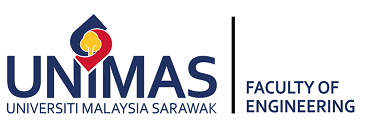Kismet Anak Hong Ping, Dyg Norkhairunnisa Binti Abang Zaidel, Dayang Azra Binti Awang Mat, Shafrida Binti Sahrani
Faculty of Engineering, Universiti Malaysia Sarawak, 94300, Kota Samarahan, Sarawak, Malaysia.
E-mail: This email address is being protected from spambots. You need JavaScript enabled to view it.
Abstract
Breast cancer is the leading cause of death among females, early diagnostic methods with suitable treatments improve the survival rates significantly. Microwave imaging and detection methods have been intensely researched in recent years as the most potential to become the alternative tool for detecting breast cancer as compared to the X-ray mammography. Microwave imaging promises a non-invasive screening with low-cost system fabrication and operation. Scanning does not require breast compression and can be repeated frequently since no ionizing radiation is used. The aim is not to replace mammography, ultrasound, or MRI, but to develop an alternative approach that can act as an early warning system to flag the need for more comprehensive testing. The breast image quality is affected by the sensors (antennas) and the size of the sensor. Numerous microwave biosensors have been developed for biomedical applications, with particular focus on breast tumour detection. Compared to the conventional medical imaging techniques, microwave sensors not only enable better cancer detection and improve the image resolution, but also provide attractive features such as label-free detection. This research work aims to develop a single- and dual-polarization antenna array using an inhomogeneous multilayer model of the human breast. The proposed multiple sensors will be analysed on the substrate materials (e.g. FR4, RT Duroid, ceramic dielectric, etc.) by using 3D Electromagnetic Simulator (e.g. FEKO) with high-end workstation. Sensing dielectric property differences of tissues will be studied over a wide frequency band. The proposed system is to operate in a frequency range of 2–8 GHz (with reflection coefficient (S11) below –10 dB). To validate the performance of the proposed sensors, measurement and experimental works will also be conducted at the Universiti Kebangsaan Malaysia (UKM). In order for the proposed system to be used as portable health services, small and compact instruments (e.g. laptop, portable VNA, RF Switch, etc.) are required. Finally, the results from the experimental works and portable system will be compared and validated. The significance of this research is the development of a low cost and portable system for early breast tumour detection and also inexpensive clinical breast examination to serve for low income families.
For microwave breast imaging, the physical basis depends on the notable distinction of the properties of dielectric between the normal breast tissue and the malignant tissue obtained at microwave frequencies. The system uses multiple antenna sensors to collect the transmitted and reflected signals from the breast. The core of the system is a hollowed-out hemispherical dielectric radome, which houses both the breast under test and the antenna array (e.g. 16-element). The radome is a ceramic dielectric made from alumina. The antennas are travelling-wave, resistively-loaded sensors that are designed for operation in the vicinity of breast tissues. When a breast scan recording begins, a short-duration Gaussian-modulated pulse is generated and shaped, using a passive microwave filter, such that its frequency content is concentrated in the 2-8GHz range. The pulse is scattered off of the breast tissues, and is then collected by the selected receiving antenna. Then, a different transmit-receive antenna pair is selected until all possible combinations have been cycled through. With 16 antennas, a total of 240 signals are obtained per breast scan. These received signals are save in the personal computer (e.g. laptop). This procedure will take about 30 minutes per patient. However, in this work, the heterogeneous breast phantoms will be used to mimic the dielectric properties of women breast tissues such as skin, fibro glandular, fat and tumour. The received signals will be brought and analysed for the 3D microwave tomographic images of the breast at the laboratory or medical centre in the city. The acquisition of data will take about 30 minutes while the image processing will be done several hours or even days to complete which depending on the computer’s processing time and speed. Therefore, it is crucial to have a high-end and high performance computing system (e.g. workstation or parallel computing system) in order to reduce the computational time and fasten to process of getting the results. If the suspicious object or area is detected, the case will be reported to clinical expert or specialist further check-up or diagnosis.
Figure 1: Typical measurement setup in the laboratory



